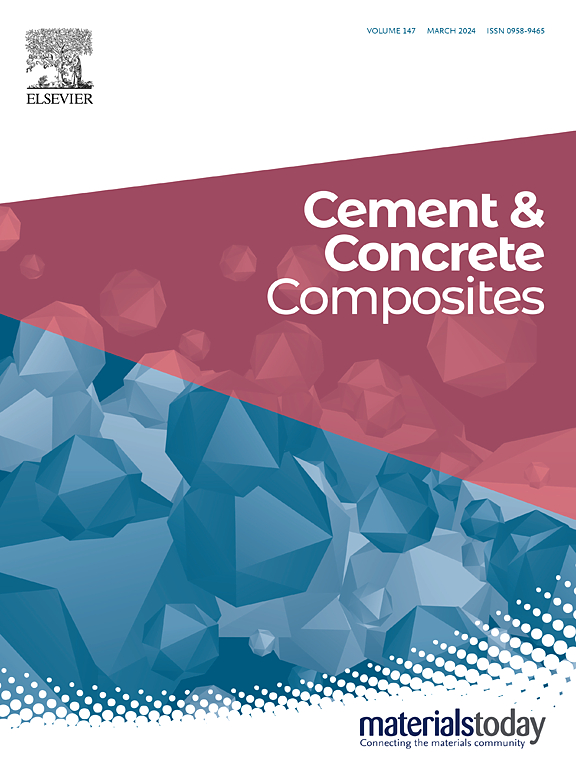Concretes containing blended-cements with reduced carbon-dioxide emissions: A chemo-thermo-hygro-mechanical model for elevated temperatures
IF 13.1
1区 工程技术
Q1 CONSTRUCTION & BUILDING TECHNOLOGY
引用次数: 0
Abstract
A comprehensive analysis aimed at understanding and assessing the high-temperature behavior of concretes containing blended cements (CEM III/A, CEM II/B-Q, and CEM IV), characterized by low carbon-dioxide emissions (during clinker’s production) is necessary to reliably model the damage in the concrete, thermal spalling included. To this purpose, a numerical chemo-thermo-hygro-mechanical model is formulated, to investigate – among other phenomena – heat transmission and pore pressure for different aggregate types.
Based on an available hydration model, a dehydration model is established to numerically investigate the evolution of dehydration and porosity at elevated temperatures. Based on the properties of concrete and cement constituents on multiple scales, an analytical homogenization process is proposed to predict the thermal conductivity of the concrete. This process is later validated and implemented into a macroscopic modeling framework.
Chemo-thermo-hygro-mechanical analyses show that the dehydration characteristics of blended low carbon-dioxide release cements may increase pore pressure in the concrete by up to 13% compared to the concrete containing ordinary Portland cement. In addition, aggregates exhibiting high thermal conductivity may contribute to a further increase (even more than 35%) in pore pressure compared to aggregates with low thermal conductivity.
Last but not least, the proposed model provides the basis for the reduction of the number of the parameters commonly required in the chemo-thermo-hygro-mechanical modeling of cementitious materials.
含有减少二氧化碳排放的混合水泥的混凝土:高温下的化学-热-湿-力学模型
综合分析旨在了解和评估含有混合水泥(CEM III/A, CEM II/B-Q和CEM IV)的混凝土的高温行为,其特征是低二氧化碳排放(在熟料生产过程中),这对于可靠地模拟混凝土中的损伤(包括热剥落)是必要的。为此,建立了一个数值化学-热-湿-力学模型,以研究不同聚集体类型的传热和孔隙压力等现象。
本文章由计算机程序翻译,如有差异,请以英文原文为准。
求助全文
约1分钟内获得全文
求助全文
来源期刊

Cement & concrete composites
工程技术-材料科学:复合
CiteScore
18.70
自引率
11.40%
发文量
459
审稿时长
65 days
期刊介绍:
Cement & concrete composites focuses on advancements in cement-concrete composite technology and the production, use, and performance of cement-based construction materials. It covers a wide range of materials, including fiber-reinforced composites, polymer composites, ferrocement, and those incorporating special aggregates or waste materials. Major themes include microstructure, material properties, testing, durability, mechanics, modeling, design, fabrication, and practical applications. The journal welcomes papers on structural behavior, field studies, repair and maintenance, serviceability, and sustainability. It aims to enhance understanding, provide a platform for unconventional materials, promote low-cost energy-saving materials, and bridge the gap between materials science, engineering, and construction. Special issues on emerging topics are also published to encourage collaboration between materials scientists, engineers, designers, and fabricators.
 求助内容:
求助内容: 应助结果提醒方式:
应助结果提醒方式:


